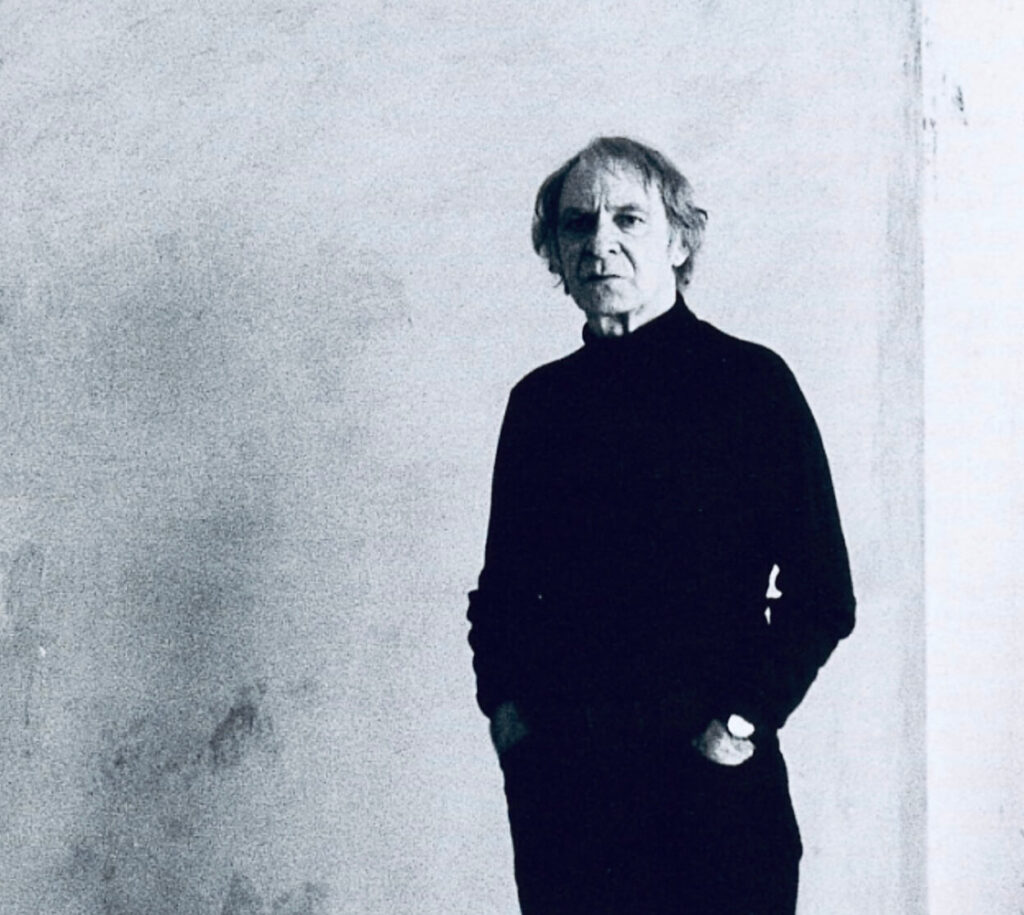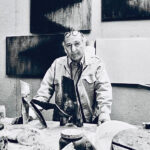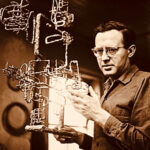Edward Dugmore
Edward Dugmore (1915-1996) was an influential American painter known for his contribution to the Abstract Expressionist movement. His work, characterized by its bold use of color, dynamic compositions, and textured surfaces, left an indelible mark on the art world. This biography explores Dugmore’s life, artistic development, and two of his most significant artworks, illustrating his profound impact on modern art.

Early Life and Education
Edward Dugmore was born on February 20, 1915, in Hartford, Connecticut. His early interest in art was evident from a young age, and he pursued his passion by enrolling in art classes at the Hartford Art School. After high school, Dugmore continued his studies at the Kansas City Art Institute, where he studied under prominent artists like Thomas Hart Benton. Benton’s emphasis on dynamic compositions and expressive brushwork had a lasting influence on Dugmore’s artistic style.
Dugmore’s formal art education was interrupted by his service in the U.S. Marine Corps during World War II. After the war, he resumed his studies, this time at the California School of Fine Arts (now the San Francisco Art Institute). There, he studied under several leading figures of Abstract Expressionism, including Clyfford Still and Mark Rothko, who greatly influenced his approach to painting.
Move to New York and Artistic Development
In 1952, Dugmore moved to New York City, the epicenter of the Abstract Expressionist movement. This move was a pivotal moment in his career, as it allowed him to immerse himself in the vibrant artistic community of the New York School. He quickly became associated with prominent artists like Jackson Pollock, Willem de Kooning, and Franz Kline, who were pushing the boundaries of traditional painting techniques.
Dugmore’s work during this period was characterized by large, bold canvases filled with intense colors and dynamic compositions. He often used thick layers of paint, creating textured surfaces that added depth and complexity to his work. His paintings were both spontaneous and meticulously composed, reflecting his belief in the power of abstraction to convey deep emotional and intellectual experiences.
Career and Recognition
Throughout the 1950s and 1960s, Dugmore’s work gained recognition through numerous solo and group exhibitions. His paintings were featured in prominent galleries such as the Stable Gallery and the Whitney Museum of American Art. His unique approach to abstraction, combining elements of color field painting and gestural abstraction, set him apart from his contemporaries and earned him critical acclaim.
Dugmore’s ability to convey a sense of movement and emotion through abstract forms was a defining feature of his work. This quality is evident in two of his most significant artworks, “Hudson River Landscape” (1955) and “Untitled (Blue)” (1961).
Important Artworks
“Hudson River Landscape” (1955)
“Hudson River Landscape” is one of Dugmore’s most celebrated works, showcasing his mastery of abstract expressionism. The painting features a dynamic composition of bold, gestural brushstrokes in rich hues of blue, green, and brown. The colors and forms suggest a landscape, evoking the natural beauty and energy of the Hudson River Valley.
This work reflects Dugmore’s interest in capturing the essence of a landscape through abstraction. The fluid, expressive brushstrokes convey a sense of movement and vitality, while the layered textures create depth and complexity. “Hudson River Landscape” exemplifies Dugmore’s ability to transform the natural world into a powerful abstract composition, highlighting his innovative approach to painting.
“Untitled (Blue)” (1961)
“Untitled (Blue)” represents another important phase in Dugmore’s career, showcasing his exploration of color and form. The painting features a large canvas dominated by shades of blue, with dynamic brushstrokes and textured surfaces creating a sense of depth and movement. The interplay of light and dark tones adds a layer of complexity, inviting the viewer to explore the nuances of the composition.
The use of blue in this painting is particularly significant, as it reflects Dugmore’s interest in the emotional and symbolic qualities of color. The expansive, monochromatic composition conveys a sense of tranquility and introspection, while the textured surface adds a tactile quality that engages the viewer on a sensory level. “Untitled (Blue)” demonstrates Dugmore’s ability to create powerful, evocative works that transcend the limitations of traditional representation.
Later Career and Teaching
In the 1970s and 1980s, Dugmore continued to develop his distinctive style, incorporating new techniques and materials into his work. He experimented with larger canvases and more complex compositions, pushing the boundaries of abstract expressionism. His later works often feature a more subdued palette and a greater emphasis on subtle tonal variations, reflecting his evolving approach to abstraction.
Throughout his career, Dugmore was also dedicated to education and mentorship. He taught at several institutions, including the Pratt Institute and the New York Studio School. His commitment to teaching and his influence on younger artists extended his impact beyond his own work, contributing to the ongoing development of abstract expressionism.
Legacy and Influence
Edward Dugmore’s legacy as an artist lies in his ability to create a unique visual language that combines emotion, movement, and color. His innovative use of gestural abstraction and his dynamic compositions have left a lasting impact on the field of modern art, influencing generations of artists and viewers.
Dugmore’s works are included in the collections of major museums and galleries around the world, including the Museum of Modern Art in New York, the Whitney Museum of American Art, and the San Francisco Museum of Modern Art. His influence extends beyond his own paintings, as he also played a crucial role in advocating for the recognition and inclusion of abstract artists within the art world.
Personal Life and Philosophy
Dugmore’s personal life was marked by his dedication to his art and his relationships with fellow artists. He maintained close friendships with many of his contemporaries, including Clyfford Still and Mark Rothko, whose ideas and techniques deeply influenced his work. These relationships provided a supportive network that nurtured his creativity and inspired his work.
Dugmore viewed his paintings as a form of self-expression and exploration, a way to engage with the world and convey his inner vision. He believed in the power of abstraction to evoke emotional and intellectual responses, and his work often reflects a deep sense of curiosity and wonder about the human experience.
Conclusion
Edward Dugmore’s artistic journey is a testament to his creativity, resilience, and profound understanding of color and form. Through his innovative use of gestural abstraction and his dynamic compositions, he created a body of work that continues to inspire and challenge viewers. “Hudson River Landscape” and “Untitled (Blue)” are just two examples of his ability to convey complex ideas and emotions through abstract forms and vibrant colors. Dugmore’s legacy as a master of abstract expressionism and a pioneer of modern art ensures that his work will continue to resonate with audiences for years to come.



